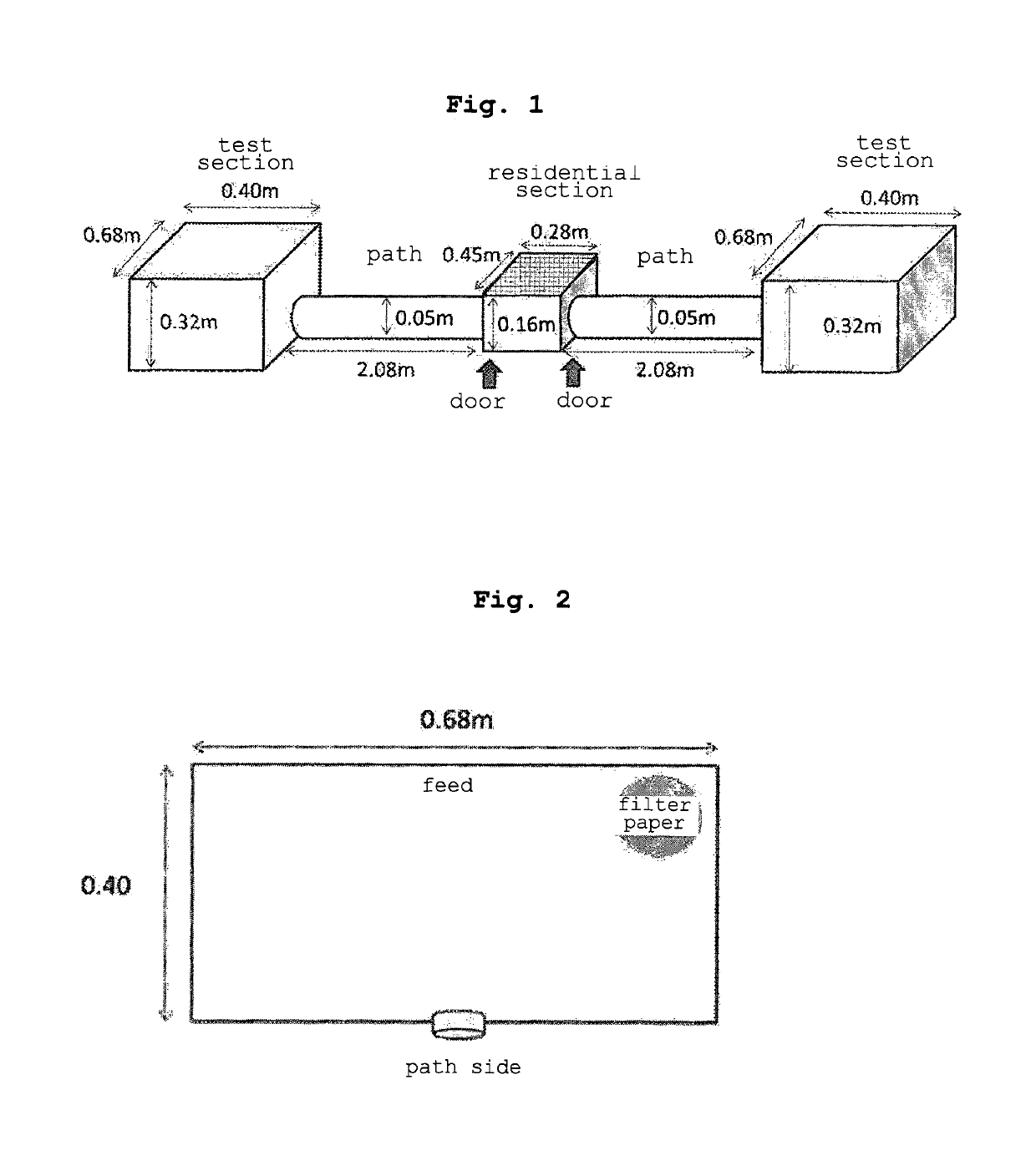Rodentia animal repellent
a rodentia and animal repellent technology, applied in the field of rodentia animal repellent, can solve the problems of economic loss and loss of life, and achieve the effect of effectively repelling rodentia animals and preventing damage to rodentia animals in this pla
- Summary
- Abstract
- Description
- Claims
- Application Information
AI Technical Summary
Benefits of technology
Problems solved by technology
Method used
Image
Examples
production example 1
[0101]To a mixture of 2-aminothiophenol (4.00 g) and toluene (26 ml) was added dropwise a mixture of propionyl chloride (2.79 ml) and toluene (14 ml) over about 10 min. Then, the mixture was stirred with heating under reflux for about 5 hr while removing water by a Dean-Stark trap. The reaction mass was cooled to room temperature, saturated aqueous sodium hydrogen carbonate solution (50 ml) was added, and the mixture was extracted twice with ethyl acetate (50 ml). The combined organic layer was washed with saturated brine (50 ml), dried over anhydrous sodium sulfate, and concentrated under reduced pressure. The residue was purified by silica gel column chromatography to give 2-ethyl-1,3-benzothiazole (hereinafter to be indicated as the present compound 2) (2.85 g).
[0102]
Present Compound 2:
[0103]1H-NMR (CDCl3) δ:7.97 (d, 1H, J=7.8 Hz), 7.85 (d, 1H, J=7.8 Hz), 7.45 (m, 1H), 7.35 (m, 1H), 3.16 (q, 2H, J=7.6 Hz), 1.48 (t, 3H, J=7.6 Hz)
production example 2
[0104]To a mixture of 2-aminothiophenol (4.00 g) and toluene (26 ml) was added dropwise a mixture of isobutyryl chloride (3.37 ml) and toluene (14 ml) over about 10 min. Then, the mixture was stirred with heating under reflux for about 11 hr while removing water by a Dean-Stark trap. The reaction mass was cooled to room temperature, saturated aqueous sodium hydrogen carbonate solution (50 ml) was added, and the mixture was extracted twice with ethyl acetate (50 ml). The combined organic layer was washed with saturated brine (50 ml), dried over anhydrous sodium sulfate, and concentrated under reduced pressure. The residue was purified by silica gel column chromatography to give 2-isopropyl-1,3-benzothiazole (hereinafter to be indicated as the present compound 3) (3.37 g).
[0105]
Present Compound 3:
[0106]1H-NMR (CDCl3) δ:7.98 (d, 1H, J=8.4 Hz), 7.85 (d, 1H, J=8.4 Hz), 7.45 (m, 1H), 7.34 (m, 1H), 3.43 (m, 1H), 1.49 (d, 6H, J=6.8 Hz)
production example 3
[0107]To a mixture of 2-aminothiophenol (4.00 g) and toluene (26 ml) was added dropwise a mixture of pentanoyl chloride (3.87 ml) and toluene (14 ml) over about 10 min. Then, the mixture was stirred with heating under reflux for about 10 hr while removing water by a Dean-Stark trap. The reaction mass was cooled to room temperature, saturated aqueous sodium hydrogen carbonate solution (50 ml) was added, and the mixture was extracted twice with ethyl acetate (50 ml). The combined organic layer was washed with saturated brine (50 ml), dried over anhydrous sodium sulfate, and concentrated under reduced pressure. The residue was purified by silica gel column chromatography to give 2-butyl-1,3-benzothiazole (hereinafter to be indicated as the present compound 4) (3.84 g).
[0108]
Present Compound 4:
[0109]1H-NMR (CDCl3) δ:7.97 (d, 1H, J=8.4 Hz), 7.84 (d, 1H, J=8.4 Hz), 7.44 (m, 1H), 7.34 (m, 1H), 3.12 (t, 2H, J=7.8 Hz), 1.87 (m, 2H), 1.48 (m, 2H), 0.98 (t, 3H, J=7.2 Hz)
PUM
| Property | Measurement | Unit |
|---|---|---|
| reaction temperature | aaaaa | aaaaa |
| length | aaaaa | aaaaa |
| length | aaaaa | aaaaa |
Abstract
Description
Claims
Application Information
 Login to View More
Login to View More - R&D
- Intellectual Property
- Life Sciences
- Materials
- Tech Scout
- Unparalleled Data Quality
- Higher Quality Content
- 60% Fewer Hallucinations
Browse by: Latest US Patents, China's latest patents, Technical Efficacy Thesaurus, Application Domain, Technology Topic, Popular Technical Reports.
© 2025 PatSnap. All rights reserved.Legal|Privacy policy|Modern Slavery Act Transparency Statement|Sitemap|About US| Contact US: help@patsnap.com



